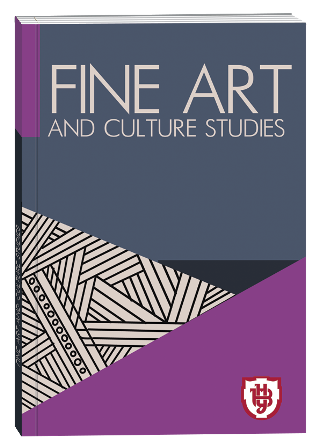DEVELOPMENT OF INSTRUMENTAL ENSEMBLE PERFORMANCE SKILLS
DOI:
https://doi.org/10.32782/facs-2022-1-12Keywords:
ensemble, music performance, metric rhythm, tempo ensemble, collective performance, rehearsal work, instrumentalistAbstract
The article is a study of various factors of the development of a musician’s ensemble performance skills. It generalizes the aspects of metric rhythm, tempo, timbre and dynamics in the process of ensemble performance activity of an instrumentalist. The performers’ participation in collective music performance contributes to the development of their active interaction with music art, widens the range of their artistic and esthetic knowledge, practical and professional skills. The purpose of the study: to highlight and summarize the psychological and pedagogical features of the formation of skills of ensemble playing musician-instrumentalist. Research methodology: theoretical analysis of scientific and methodological literature within the outlined topics; methods - ascent from the general to the specific, observation of the performances of leading ensemble groups and creative and performing activities of students; in the course of the educational process in orchestral and ensemble classes; selfobservation, modeling of the leader's interaction with the music group, analysis of the performing and pedagogical experience of the leaders of various ensemble groups, comparison and generalization of the obtained data. The scientific novelty of the work is an attempt to theoretically generalize the general principles of ensembleperforming work of a musician-instrumentalist with an emphasis on the practical side of their implementation. Conclusions. In the process of work with music material, a metric-rhythmic ensemble involves the following: keeping the necessary general collective tempo in every part or a certain episode of a piece of music; analogous feeling and performance by each musician and the collective as a whole of gradual and abrupt changes of tempo, accelerations and slowdowns, agogic deviations; correct, identical performance by each musician, each part and group of the corresponding metric units, coordination of the vertical and the horizontal rhythmic component. The article outlines the tempo-related challenges in the work of an ensemble, including keeping an even, stable tempo, in particular in music pieces with a various texture; various accelerations and slowdowns of tempo; rubato tempo; various caesuras and fermatas. The right tempo may be distinguished by the following two features: the right tempo brings out the musical content of a phrase in the best way; it ensures the technical accuracy and clearness of performance. The joint ensemble performance of nonstandard tempo deviations in an ensemble may be considered proficient if it meets the following requirements: the ensemble performance synchrony is not deranged; the process of changing tempo is carried out by all the musicians. The article outlines various factors of relativity of ensemble dynamics: relativity of dynamics in pieces of music from different epochs and styles; relativity of dynamic nuances in pieces of music of different genres; relativity of dynamic nuances in parts of the same piece of music that differ in their dramaturgic significance; relativity of dynamics between ensemble parts.
References
Готлиб А. Основы ансамблевой техники. Москва : Музыка, 1971. 94 с.
Давидян Р. Р. Квартетное искусство: Проблемы исполнительства – теоретические основы, практический опыт. Москва : Музыка, 1994. 270 с.
Ільченко О. О. Народне оркестрове виконавство: аматорство і проблеми художності: монографія. Київ : КДІК, 1994. 244 с.
Каргин А. С. Работа с самодеятельным оркестром русских народных Инструментов. Москва : Музыка, 1982. 159 с.
Каргин А. С. Воспитательная работа в самодеятельном художественном коллективе. Москва : Просвещение, 1984. 224 с.
Коган Г. У врат мастерства. Работа пианиста. Москва : Музыка, 1969. 342 с.
Нежинский О. Детский духовой оркестр. Москва : Музыка, 1989. 128 с
Паньків Л. П. Теорія та методика підготовки майбутнього вчителя до керівництва учнівськими музичними колективами: дис... канд. пед. наук : 3.00.02. Київ, 2005. 221 с.
Різоль М. Ансамбль, як засіб формування музичного мислення музиканта. Камерний ансамбль: Педагогіка та виконавство. 1979. С. 64–76.
Ризоль Н. Очерки о работе в ансамбле баянистов. Москва : Советский композитор, 1986. 222 с.
Такун Ф. И. Основные принцыпы репетиционного процесса в духовом оркестре. Лекция по курсу: методика работы с духовым оркестром. Москва : Просвещение, 1996. 19 с.
Федоришин В. І. Формування виконавської майстерності майбутніх учителів музики в умовах колективного музикування. Наука і сучасність. 2004. Т. 46. С. 130–138.







